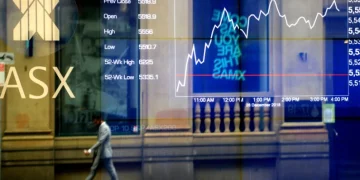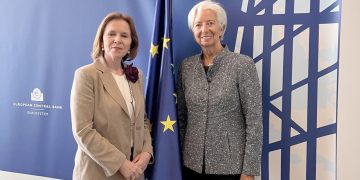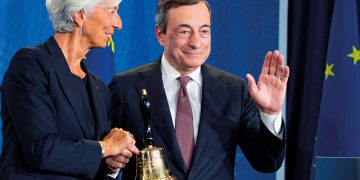Introduction
The first quarter of 2025 revealed a striking divergence in corporate earnings between two of the world’s largest economies. European companies reported a 5% decline in profits compared to the previous year, while their American counterparts posted a robust 7% growth in earnings. This earnings gap has not only captured the attention of investors but also appears to be driving significant shifts in global capital flows. Institutional investors have visibly favored the U.S. market, contributing to a notable strengthening of the U.S. dollar and raising questions about the sustainability of Europe’s capital markets amid these structural headwinds. The core tension revolves around whether this transatlantic earnings divergence marks a temporary market adjustment or the beginning of a lasting reallocation of global investment.
Q1 2025 Earnings Data: Europe Slips as US Accelerates
Data released from corporate earnings reports during Q1 2025 underscores the growing gap in performance between Europe and the U.S. The STOXX Europe 600 index companies collectively saw net profits shrink by approximately 5% year-over-year. Key sectors driving this decline included industrials, consumer discretionary, and financials. Challenges such as supply chain disruptions, energy price volatility, and geopolitical tensions weighed heavily on European companies’ margins.
Conversely, the S&P 500’s earnings growth of 7% was fueled by strong performances in technology, healthcare, and consumer staples. U.S. firms benefited from higher domestic demand, efficient supply chain management, and innovation-led productivity gains. Corporate earnings exceeded analysts’ expectations, supporting optimism about U.S. economic resilience.
These divergent earnings trajectories naturally influenced asset allocations. According to EPFR Global data, net inflows into U.S. equity funds surged by $65 billion in Q1, while European equity funds saw outflows nearing $20 billion. This flow dynamic reflected investors’ increasing preference for the U.S. as a safer and more profitable investment environment during uncertain times.
Capital Flows and Currency Impact: The Strengthening Dollar
The earnings divergence fueled robust capital flows toward the U.S., which in turn exerted upward pressure on the U.S. dollar. As investors shifted assets into American equities and bonds, demand for the dollar rose sharply. By the end of March 2025, the U.S. Dollar Index (DXY) had appreciated by nearly 4% compared to its value six months prior.
This dollar strength carries multiple implications. For U.S. multinational companies, a stronger dollar can dampen overseas revenue growth when translated back into dollars, potentially moderating future earnings growth. However, the immediate impact has been positive as foreign capital continues to favor U.S. assets, attracted by relative earnings strength and perceived stability.
For Europe, the dollar rally introduced challenges. A weaker euro against the dollar increased the cost of dollar-denominated imports and corporate debt. European firms with substantial dollar exposure faced margin pressures. The European Central Bank (ECB) found itself in a difficult position, balancing support for the euro while navigating its own policy tightening amid inflation concerns.
Structural Adjustments in European Capital Markets
The earnings weakness and capital outflows have intensified calls for structural reforms in Europe’s capital markets. Analysts note that Europe’s slower economic growth and fragmented regulatory environment make it harder for companies to compete with their American peers.
Key issues include limited venture capital availability, less developed technology ecosystems, and conservative banking practices that constrain innovation financing. These factors contribute to slower earnings growth and reduce market attractiveness for global investors.
European policymakers have responded by proposing initiatives to deepen capital markets integration, promote cross-border investments, and improve access to financing for startups and SMEs. The European Commission’s Capital Markets Union project aims to reduce fragmentation and create a more efficient, unified financial system.
Despite these efforts, structural challenges remain. The relative underperformance of European equities, compounded by geopolitical uncertainties and energy price volatility, suggests that capital markets may face ongoing pressure. This environment might compel further capital flight toward U.S. markets unless reforms yield tangible results.

Opposing Perspectives: Market Normalization or Reversal Ahead?
The contrasting views on the earnings divergence and its implications reflect broader uncertainty in financial circles. Morgan Stanley analysts argue that the current market reactions are rational adjustments to differing economic fundamentals. They emphasize that the U.S. economy’s innovation-led growth cycle and fiscal stimulus have temporarily outpaced Europe’s recovery, justifying the earnings gap and capital flows.
Morgan Stanley’s research suggests that investors are appropriately pricing in relative risk and reward profiles, with the market efficiently allocating resources where returns are strongest. According to their outlook, European earnings could stabilize as supply chain issues resolve and inflation moderates, which would gradually restore investor confidence.
On the other hand, several European economists warn that the earnings gap signals deeper, structural issues in the continent’s economic model. They caution that without significant reform, Europe risks falling into a prolonged cycle of underperformance and capital flight. Professor Claudia Richter of the University of Frankfurt argues that demographic headwinds, slower productivity growth, and political fragmentation could undermine Europe’s competitiveness over the medium term.
Richter advocates for accelerated fiscal integration, stronger innovation incentives, and improved labor mobility across the EU as necessary steps to counteract these risks. She also notes that global geopolitical shifts, including evolving U.S.-China relations, might reshape investment patterns in ways that could either exacerbate or mitigate Europe’s challenges.
Implications for Global Investors and Market Participants
The transatlantic earnings divergence in early 2025 has become a key factor in shaping global investment strategies. Investors increasingly view the U.S. as a preferred destination for capital seeking growth and stability. This trend pressures global asset managers to overweight American equities while reducing exposure to Europe.
Currency markets reflect these shifts, with portfolio reallocations reinforcing dollar strength and euro weakness. This dynamic affects trade balances, inflationary pressures, and monetary policy decisions on both sides of the Atlantic.
European companies face the imperative to adapt. Accelerating digital transformation, pursuing cross-border collaborations, and optimizing capital structures could help offset some of the headwinds. Firms that can demonstrate resilience and growth potential may still attract foreign investment despite broader market trends.
For U.S. companies, the challenge lies in managing currency risks and sustaining innovation momentum. The strength of earnings growth relies on continued favorable domestic demand and maintaining leadership in key sectors such as technology and healthcare.
From a policy perspective, both the Federal Reserve and the ECB will need to closely monitor the interplay between earnings performance, capital flows, and currency dynamics. Coordinated efforts might be required to stabilize markets and prevent excessive volatility that could harm global economic recovery.
Conclusion
The Q1 2025 divergence in corporate earnings between Europe and the United States has signaled a potential shift in global investment flows, favoring the U.S. and reinforcing the dollar’s strength. While Morgan Stanley and other market watchers interpret this as a reasonable reflection of underlying economic conditions, European economists caution that structural challenges may prolong Europe’s relative underperformance. This earnings gap is reshaping capital allocations and currency markets, prompting strategic responses from investors, companies, and policymakers. The coming quarters will reveal whether Europe can reverse these trends through reform and innovation or if the transatlantic divergence marks a new era of global financial realignment.








































